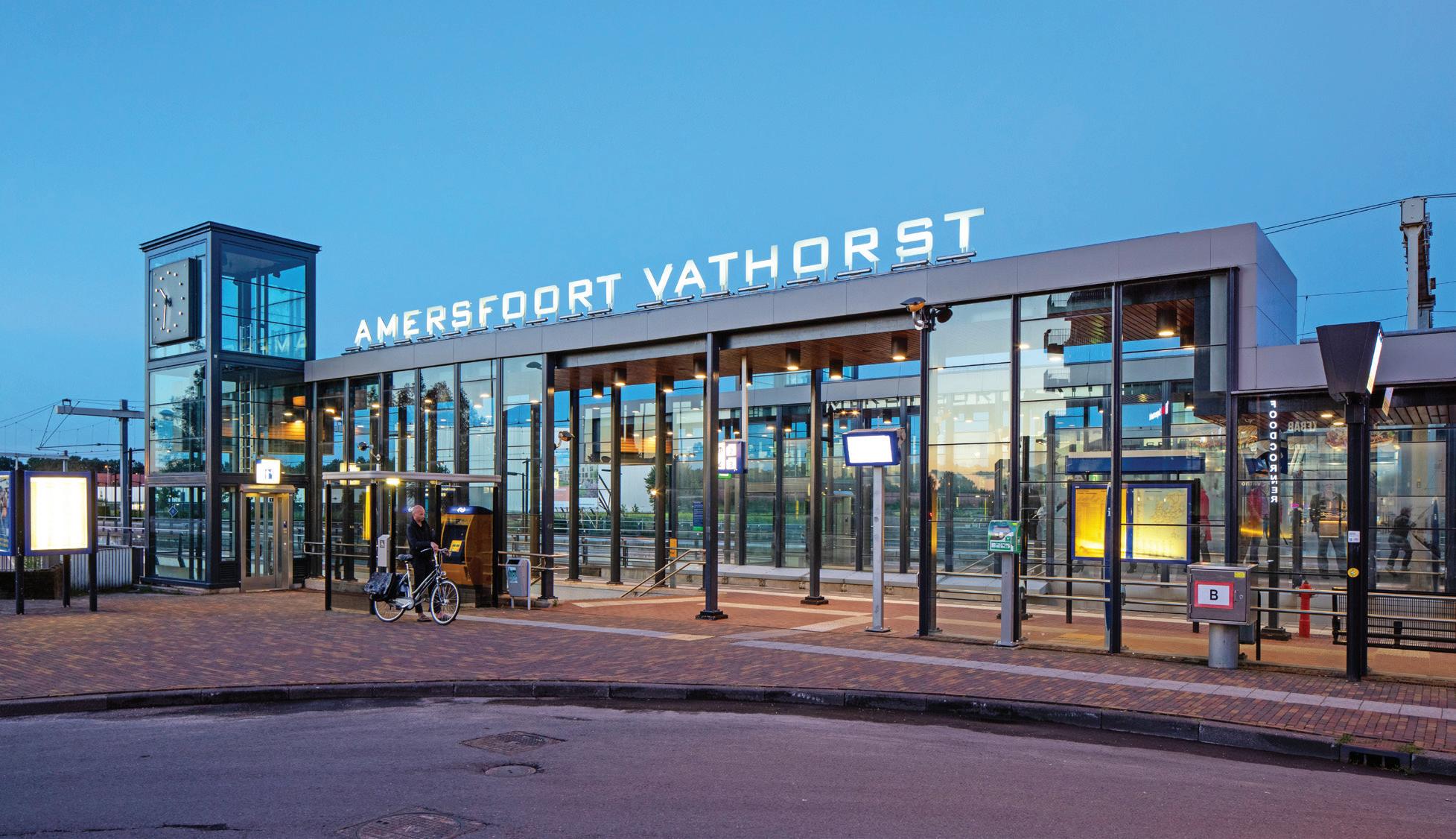
4 minute read
3 Amersfoort Vathorst, test with lamp post fixtures
Amersfoort Vathorst station is a stop on the Amersfoort Centraal - Zwolle line. It features 2 side platforms. There are light and speaker poles on each platform.
Lighting posts sometimes bear the disadvantage of glare or a spotty light pattern on the platform. This is because they are relatively far apart. There tends to be a light source every 4 metres under a platform canopy. Open platforms, however, have a 4-metre high lamppost every 16 metres. So, a covered platform can be illuminated by 4 times as many light sources. This allows for the lamps under a canopy to be less luminous than on an open platform. Because open-platform lamps are required to be much more luminous, they often cause more glare. The Lighting Programme conducted a test in 2015 at Amersfoort Vathorst station to find out which type of fixture is still adequate and causes the least glare.
The requirement of a luminance of less than 8000Cd/m2 is not feasible for lampposts spaced 16 metres apart. That is why the Lighting Programme does not apply the same luminance requirement to open platforms as it does to covered platforms. A lamppost with an old fluorescent fixture is especially glaring when travellers stand between the posts and look up at the fixture at a slight angle. Travellers never look straight up into the light source from under a lamppost, so glare is no issue here. To avoid blinding, visually impaired passengers often wear a cap with a sun visor.
Separate speaker posts with two speakers each are provided for passenger anouncements. The speakers are aligned parallel to the platform and rotated 180 degrees relative to each other. The two speakers should be separated by no more than 32 metres due to intelligibility. However, a post spacing (grid) of 32 metres is too much for lighting, so lampposts are spaced 16 metres apart. A separate speaker post (cf. OVS00022) is positioned between two lampposts every 32 metres (see the photo of Amersfoort Vathorst).
In order to minimise the number of obstacles on the platform, we now tend to install the speakers on lampposts every 32 metres. This eliminates 9 posts on a 300-metre side platform.
It is also possible to place one speaker on each lamppost every 16m. The advantage of one speaker per lamppost is that it looks less cluttered and the lamppost lid becomes less crowded (better for maintenance). The downside is that twice as many posts will have to be fitted with cabling for public announcements. In that case, all speakers are aimed in the same direction.
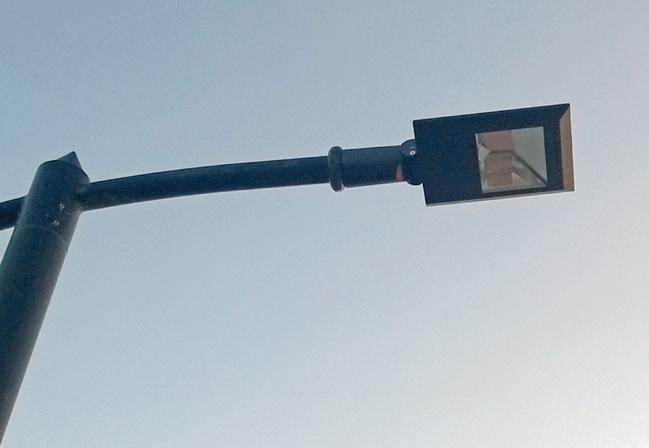

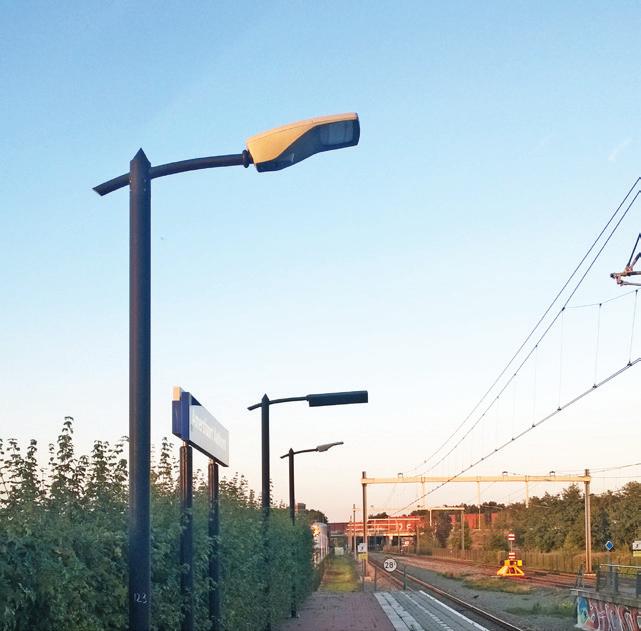


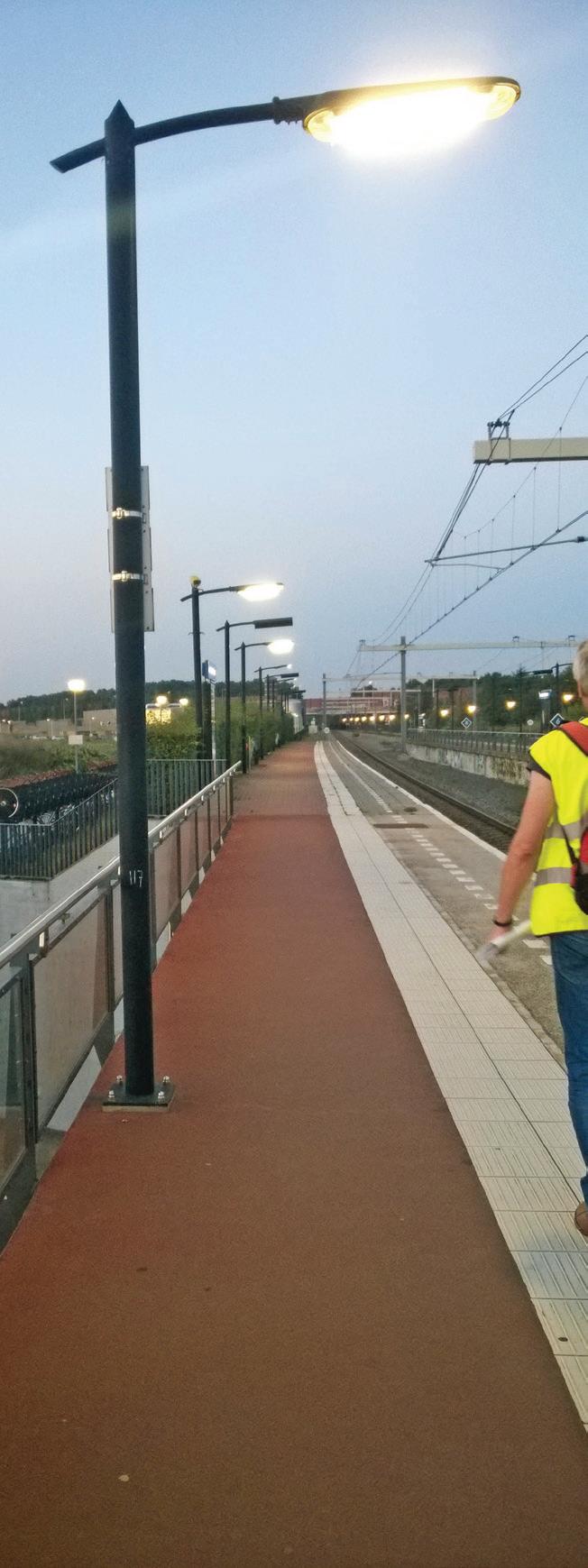
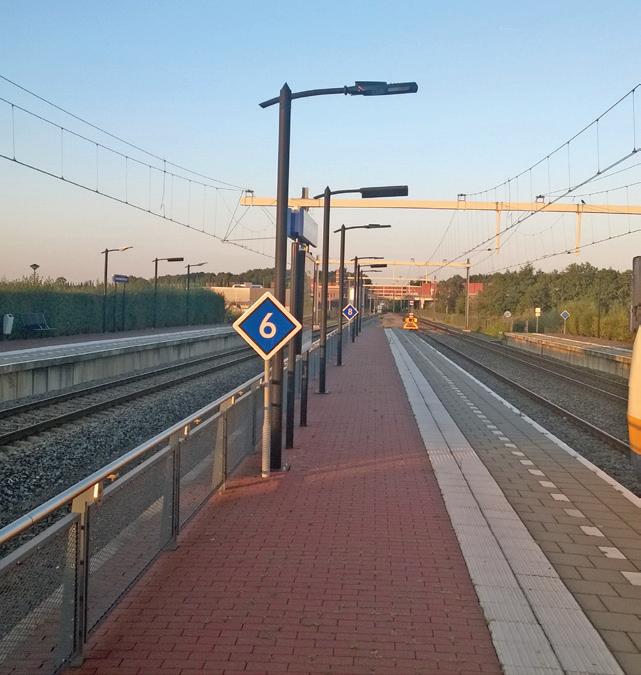
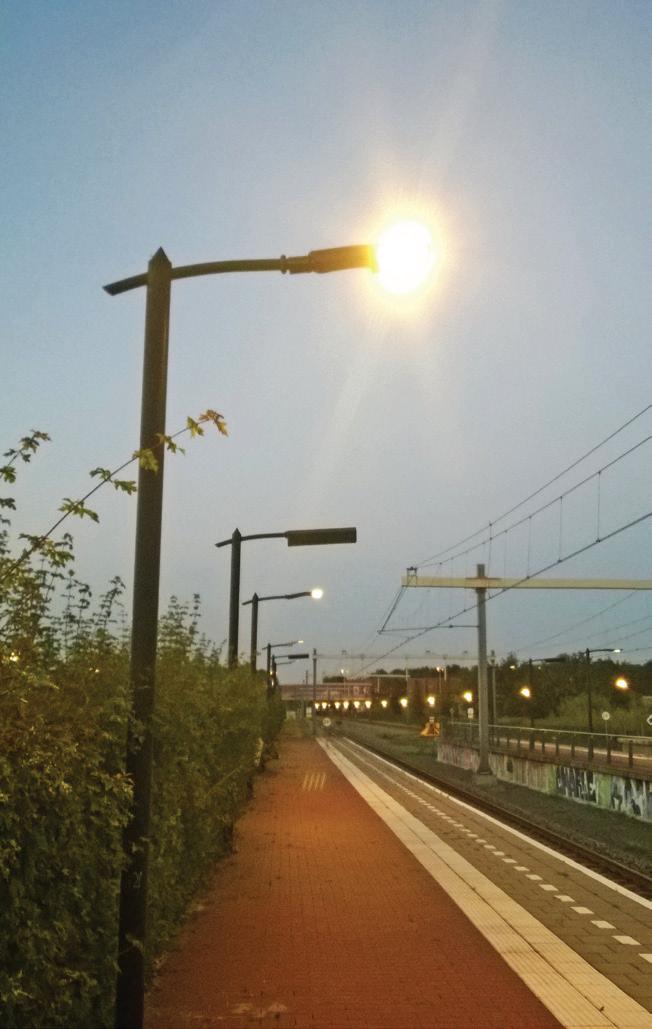
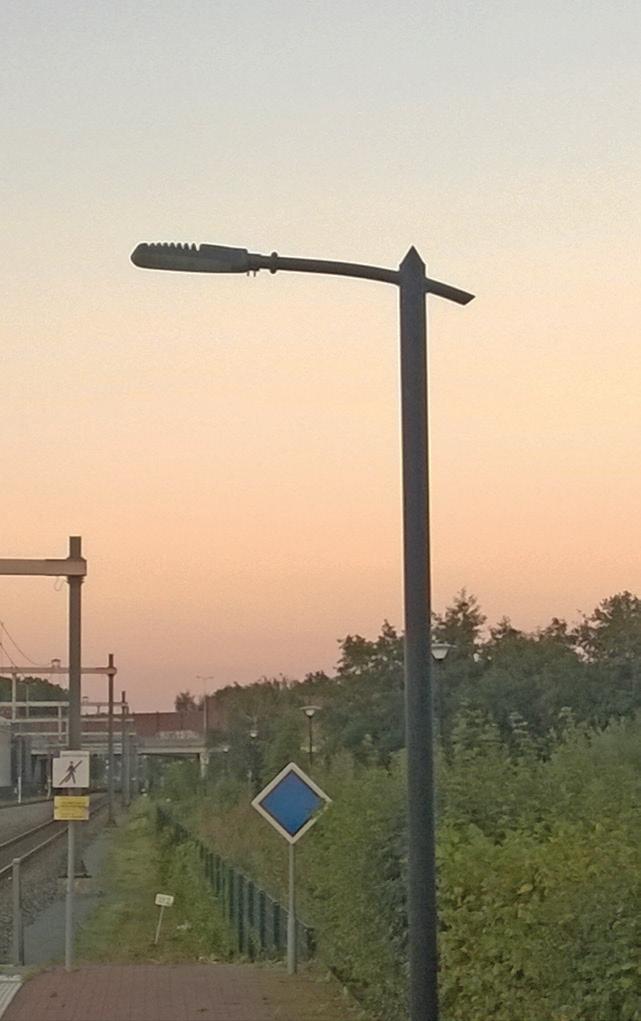

Lampposts taller than 4 metres (5m) are sometimes spaced 20 metres apart. Lampposts on a side platform about 2.5 metres wide cannot exceed 4 metres in height. Should they unexpectedly fall over, 4-metre lampposts could never hit the overhead line. To prevent this risk, high lampposts were previously fitted with a post-rail connection, but this is no longer desirable given the construction, maintenance and inspection costs. On central platforms wider than 6 metres, however, 5-metre lampposts are allowed without pole-rail connections.
In consultation with lighting consultant R.J. Vos and Koninklijke Visio, the Lighting Programme conducted a pilot in 2016 at Amersfoort Vathorst station with LED fixtures on 4-metre-high lampposts spaced on a 16-metre grid. We had 2 test fixtures mounted on 2 lampposts every time, so we could see how they would interact between lampposts. In consultation with the light advisor, we selected, installed and assessed 11 fixtures. This allowed us to see how the lampposts' beams overlap and whether any dark spots emerge on the platform.
The test fixtures were usually fixtures intended to illuminate bicycle paths. They provide an oval beam on a strip of about 10 metres to the left and right of the lamppost with a width of 4 metres. An optic (lens) can be selected for each fixture to optimise the beam.
A lot of energy can be saved with optics. RLN00012 states that we want to achieve an Energy Performance of 0.15 W/m2 on an open platform of a stop. If we light 16 metres of a 3-metre wide platform with one lamppost, this amounts to around 50m2. At 0.15 W/m2, this amounts to a 7W LED light per lamppost. However, if the optic is less efficient and, for example, also lights the hedge next to the platform or trough, the area becomes 16 x 5m = 80m2 At 0.15 W/m212W is required. So, a less efficient optic requires a 60% heavier light source.
In September 2016, we conducted an inspection of the 11 x 2 LED test fixtures together with Royal Visio. Train drivers can also be blinded by the lamppost fixtures when passing through a station. For that reason, we involved train drivers in the inspection through the work group MOOS ("Met Oog Op Seinen") and included their experiences.
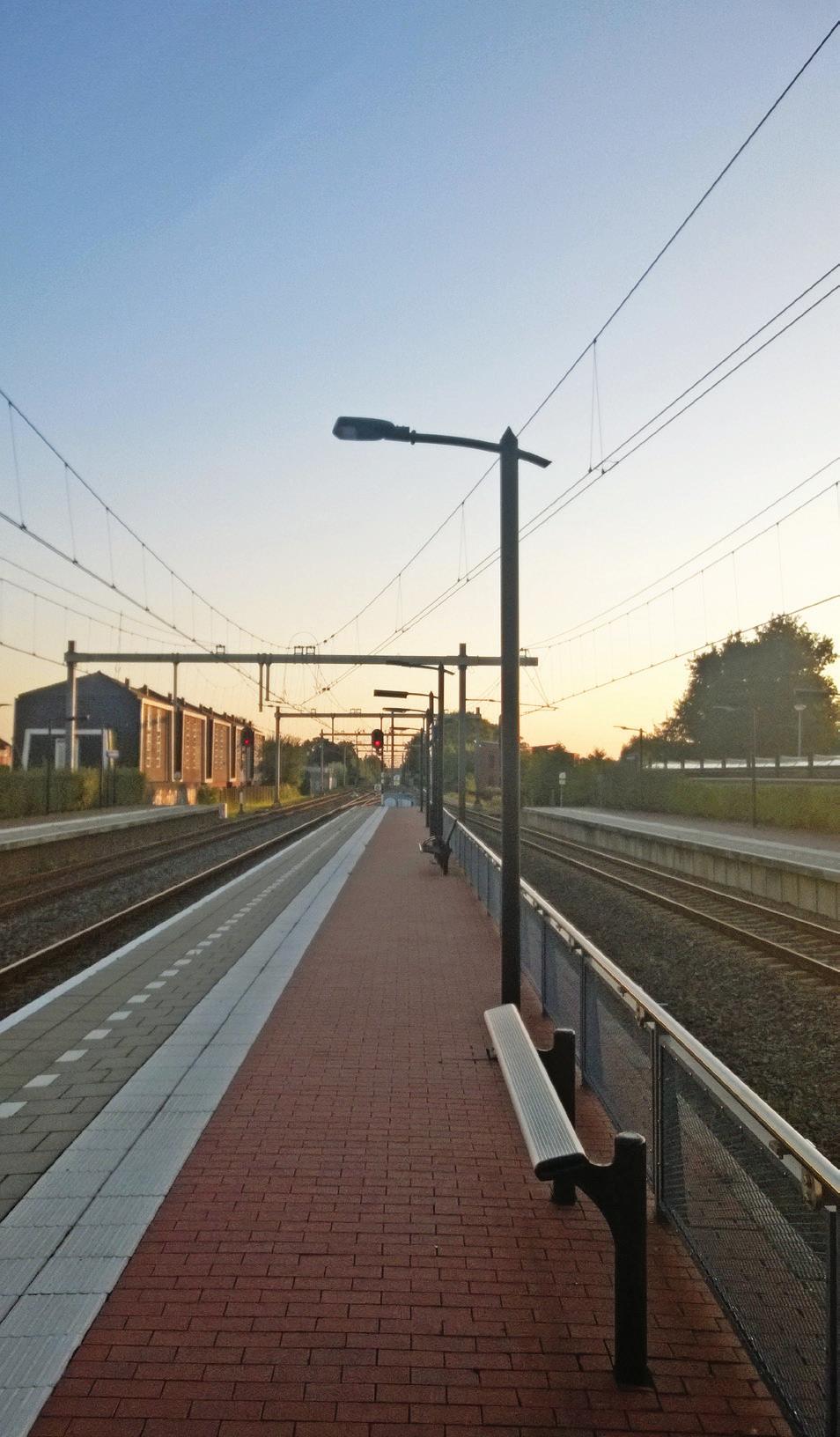
The fixtures were set for 20 lux on the platform (setting for large stations). This should be 5 lux at stops and 10 lux at slightly larger stations (Basic and Plus). If LED fixtures for smaller stations are dimmed 50% or 75% ex-factory, glare is decreased while energy performance and lifetime are increased.
Tips and conclusions:
1. The fixture containing the highest number of LEDs (24 pieces) resulted in the least amount of glare.
2. As the number of LEDs in a test fixture increased (4, 12, 16 and 18), the light became less blinding or unpleasant.
3. To avoid glare to Train drivers, the tilt angle should not be set to illuminate the trough.
4. Fixtures with mirrors are usually intended for architectural lighting or indirect lighting. This may cause unexpected glare from one specific angle that does not occur just a few steps to the side. That is why fixtures with mirrors are less suitable for platforms and bicycle paths where users look into the fixture at different angles.
The test lighting setup at Amersfoort Centraal, with one LED chalice in warm white (2700K). This is the same colour as the line lighting along walls. In the background, an old mercury lamp with greenish light, with a colour saturation of just 20% (Ra20), while RLN00012 now demands 80%. At Ra20, only 20% of the colours are discernible (pretty much just light and dark contrasts) and faces cannot be recognised. Difficulty recognising faces makes people feel unsafe. At Ra80, enough colour is visible to recognise faces.
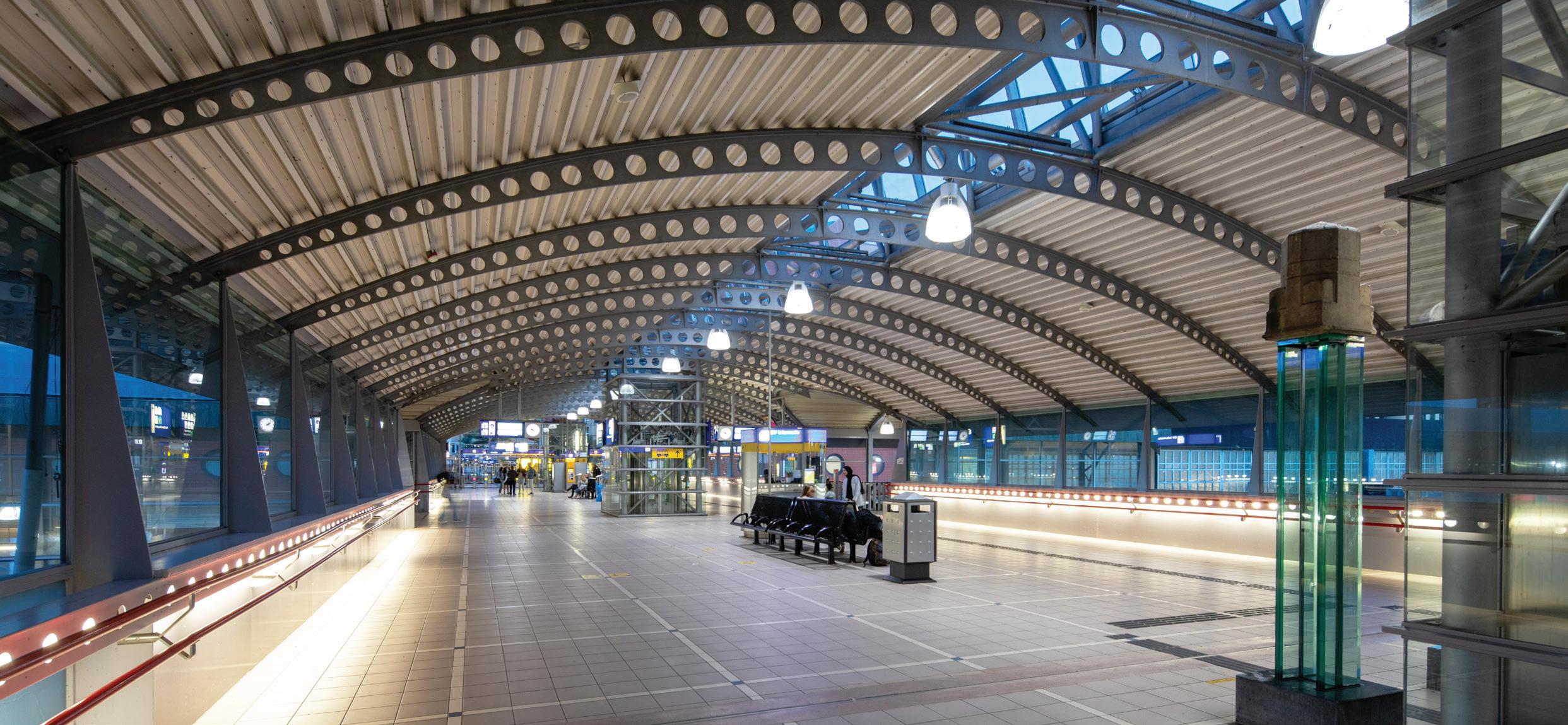
The indoor passage after replacement of all chalice fixtures in the evening situation, with warm white light. The floor is uniformly lit in one colour, which has a calming effect. The optics aim more of the light upwards, making the roof look better with crisper colours.











